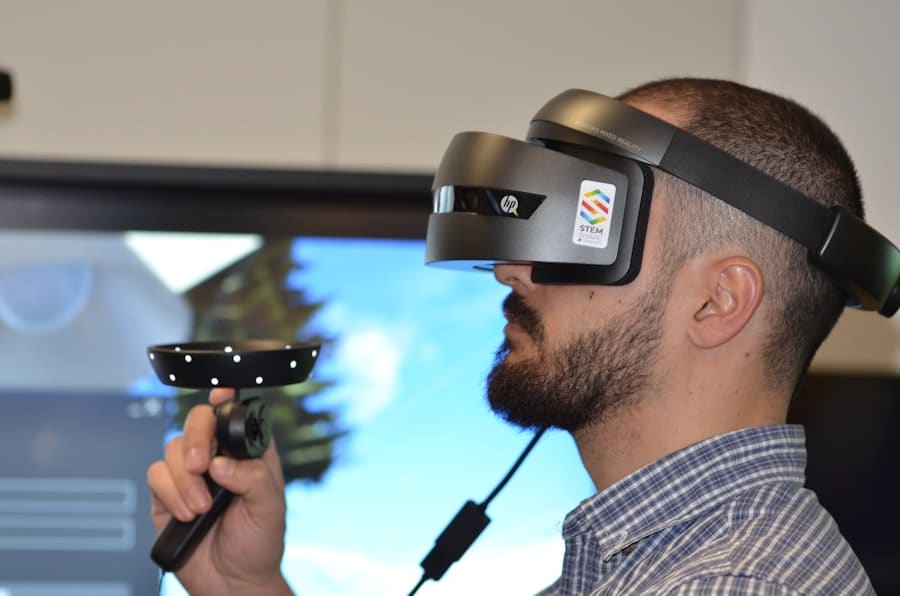In recent years, voice-activated devices have surged in popularity, transforming the way individuals interact with technology. The advent of sophisticated natural language processing and machine learning algorithms has enabled these devices to understand and respond to human speech with remarkable accuracy.
According to a report by Statista, the global smart speaker market was valued at approximately $11 billion in 2020 and is projected to grow significantly, reflecting the increasing reliance on voice-activated interfaces in everyday life. The rise of voice-activated devices can also be attributed to the growing demand for hands-free technology. As people lead busier lives, the need for multitasking has become paramount.
Voice-activated devices allow users to perform various tasks without needing to physically interact with a screen or keyboard. This shift has been particularly evident during the COVID-19 pandemic, where contactless interactions became essential for health and safety. The convenience of simply speaking a command has made these devices indispensable in many households, leading to a rapid increase in adoption rates across diverse demographics.
Key Takeaways
- Voice-activated devices are becoming increasingly popular and widespread.
- They offer convenience and improved accessibility for users.
- Integration with smart home technology enhances overall functionality.
- Personalization and hands-free control improve user experience and safety.
- The market is growing rapidly, but challenges and concerns remain.
Convenience and Accessibility
One of the most compelling advantages of voice-activated devices is their inherent convenience. Users can perform a multitude of tasks—such as setting reminders, checking the weather, or playing music—simply by speaking. This ease of use is particularly beneficial for individuals with disabilities or those who may struggle with traditional input methods.
For instance, people with limited mobility can control their environment without needing to physically manipulate devices, thereby enhancing their independence and quality of life. The accessibility features built into many voice-activated systems are designed to cater to a wide range of users, making technology more inclusive than ever before. Moreover, the convenience offered by these devices extends beyond individual users to entire households.
Families can engage in shared activities while still managing their schedules and tasks through voice commands. For example, a parent cooking dinner can ask their voice assistant to play a specific playlist or set a timer without interrupting their workflow. This seamless integration into daily routines exemplifies how voice-activated technology has become an integral part of modern living, streamlining tasks and enhancing overall efficiency.
Integration with Smart Home Technology

The integration of voice-activated devices with smart home technology has further amplified their appeal. Smart home ecosystems allow users to control various connected devices—such as lights, thermostats, and security systems—through voice commands. This interconnectedness creates a cohesive user experience where individuals can manage their entire home environment from a single interface.
For instance, saying “Goodnight” to a voice assistant can trigger a series of actions: turning off lights, locking doors, and adjusting the thermostat for optimal comfort during sleep. This level of integration not only simplifies home management but also enhances energy efficiency and security. Users can monitor their energy consumption and make adjustments through voice commands, contributing to more sustainable living practices.
Additionally, the ability to control security systems via voice adds an extra layer of convenience and peace of mind. Homeowners can check camera feeds or lock doors remotely, ensuring that their property remains secure even when they are away. The synergy between voice-activated devices and smart home technology exemplifies how innovation can create a more connected and efficient living environment.
Enhanced User Experience
Voice-activated devices have fundamentally altered the user experience by providing a more intuitive way to interact with technology. Traditional interfaces often require users to navigate complex menus or remember specific commands; however, voice interaction mimics natural conversation, making it more accessible for users of all ages. This shift towards conversational interfaces has led to increased user engagement and satisfaction, as individuals find it easier to communicate their needs without the barriers posed by conventional input methods.
Furthermore, advancements in artificial intelligence have enabled voice assistants to learn from user interactions over time. This capability allows them to provide more relevant responses and suggestions based on individual preferences and habits. For example, if a user frequently asks for news updates in the morning, the device may proactively offer a summary of current events as part of its routine.
This proactive approach not only enhances user experience but also fosters a sense of companionship between users and their devices, as they become accustomed to personalized interactions that cater to their specific needs.
Personalization and Customization
Personalization is a key feature that distinguishes voice-activated devices from traditional technology. Users can customize their experience by setting preferences for music genres, news sources, or even the tone of the voice assistant itself. This level of personalization creates a more engaging interaction, as users feel that their devices are tailored to their unique tastes and lifestyles.
For instance, a user who enjoys classical music can set their device to prioritize playlists from that genre when asked to play music. Moreover, many voice-activated systems allow for multiple user profiles, enabling different family members to have personalized experiences on the same device. This feature is particularly beneficial in households where various individuals have distinct preferences and routines.
By recognizing individual voices or using account-based settings, these devices can provide tailored responses that resonate with each user’s interests. This customization fosters a deeper connection between users and their technology, making interactions feel more meaningful and relevant.
Hands-Free Control and Safety

The hands-free nature of voice-activated devices offers significant advantages in terms of safety and convenience. In situations where manual control may be impractical or dangerous—such as while driving or cooking—voice commands provide an effective alternative. For example, drivers can use voice-activated navigation systems to receive directions without taking their hands off the wheel or their eyes off the road.
This capability not only enhances safety but also promotes responsible driving practices by minimizing distractions. In addition to driving scenarios, hands-free control is invaluable in emergency situations. Users can quickly call for help or access critical information without needing to fumble for their phones or other devices.
For instance, if someone experiences a medical emergency at home, they can use a voice assistant to contact emergency services or alert family members without delay. This immediate access to assistance underscores the potential life-saving benefits of voice-activated technology in critical moments.
Growing Market and Competition
The market for voice-activated devices has experienced exponential growth over the past few years, attracting significant investment from tech giants and startups alike. Companies like Amazon, Google, Apple, and Microsoft are fiercely competing for market share by continuously innovating and expanding their product offerings. The introduction of new features—such as improved language support, enhanced security measures, and expanded compatibility with third-party applications—has become essential for maintaining a competitive edge in this rapidly evolving landscape.
As the market matures, new players are emerging with unique value propositions that challenge established brands. For instance, companies specializing in niche applications—such as healthcare or education—are developing voice-activated solutions tailored specifically for those sectors. This diversification not only enriches the overall ecosystem but also encourages innovation as companies strive to differentiate themselves in an increasingly crowded marketplace.
The growing competition is likely to drive further advancements in technology and user experience, ultimately benefiting consumers.
Potential Challenges and Concerns
Despite the numerous advantages associated with voice-activated devices, several challenges and concerns warrant consideration. Privacy issues have emerged as a significant concern among users who worry about data security and surveillance. Many voice assistants are always listening for activation phrases, raising questions about how much information is being collected and stored by these devices.
High-profile incidents involving data breaches or unauthorized access have heightened public awareness regarding privacy risks associated with smart technology. Additionally, there are concerns about the accuracy and reliability of voice recognition systems, particularly in diverse environments or among users with varying accents and speech patterns. Misunderstandings can lead to frustration or incorrect actions being taken by the device, undermining user trust in the technology.
As developers work to improve these systems’ capabilities, addressing these challenges will be crucial for fostering widespread acceptance and ensuring that users feel secure in adopting voice-activated technology as an integral part of their lives. In conclusion, while the rise of voice-activated devices presents numerous benefits in terms of convenience, accessibility, integration with smart home technology, enhanced user experience, personalization, hands-free control, market growth, and competition, it is essential to remain vigilant about potential challenges related to privacy and accuracy. As this technology continues to evolve, striking a balance between innovation and user trust will be paramount for its sustained success in the future.
In exploring the reasons behind the dominance of voice-activated devices in home entertainment, it’s interesting to consider how technology continues to evolve and adapt to user needs. For instance, the article on Hacker Noon discusses a variety of topics across the tech sector, highlighting innovations that enhance user experience and convenience, much like the advancements seen in voice-activated technology.
FAQs
What are voice-activated devices?
Voice-activated devices are electronic gadgets that can be controlled using voice commands. They typically use built-in microphones and voice recognition technology to interpret and respond to user requests.
Why are voice-activated devices popular in home entertainment?
Voice-activated devices are popular in home entertainment because they offer hands-free convenience, quick access to media content, and seamless integration with other smart home technologies, enhancing the overall user experience.
What types of home entertainment systems use voice-activated technology?
Voice-activated technology is commonly used in smart TVs, streaming devices, smart speakers, soundbars, and gaming consoles, allowing users to control playback, search for content, and adjust settings using voice commands.
How do voice-activated devices improve user experience in home entertainment?
They improve user experience by enabling easy navigation through menus, faster content discovery, personalized recommendations, and the ability to control multiple devices simultaneously without needing a remote control.
Are voice-activated devices compatible with various streaming services?
Yes, most voice-activated devices support a wide range of popular streaming services such as Netflix, Amazon Prime Video, Hulu, Spotify, and others, allowing users to access their favorite content through voice commands.
Is privacy a concern with voice-activated home entertainment devices?
Privacy can be a concern since these devices often listen for wake words and may collect voice data. Manufacturers typically provide privacy settings and options to mute microphones or delete voice recordings to address these concerns.
Do voice-activated devices require an internet connection?
Yes, most voice-activated devices require an internet connection to process voice commands, access streaming content, and update software for optimal performance.
Can voice-activated devices control other smart home gadgets?
Many voice-activated devices can integrate with other smart home products such as lights, thermostats, and security systems, allowing users to control multiple aspects of their home environment through voice commands.
Are voice-activated devices easy to set up and use?
Generally, voice-activated devices are designed for user-friendly setup and operation, often guided by mobile apps or on-screen instructions to help users connect to Wi-Fi and configure voice assistants.
What are some popular voice assistants used in home entertainment devices?
Popular voice assistants include Amazon Alexa, Google Assistant, Apple Siri, and Samsung Bixby, each offering unique features and compatibility with various home entertainment products.

